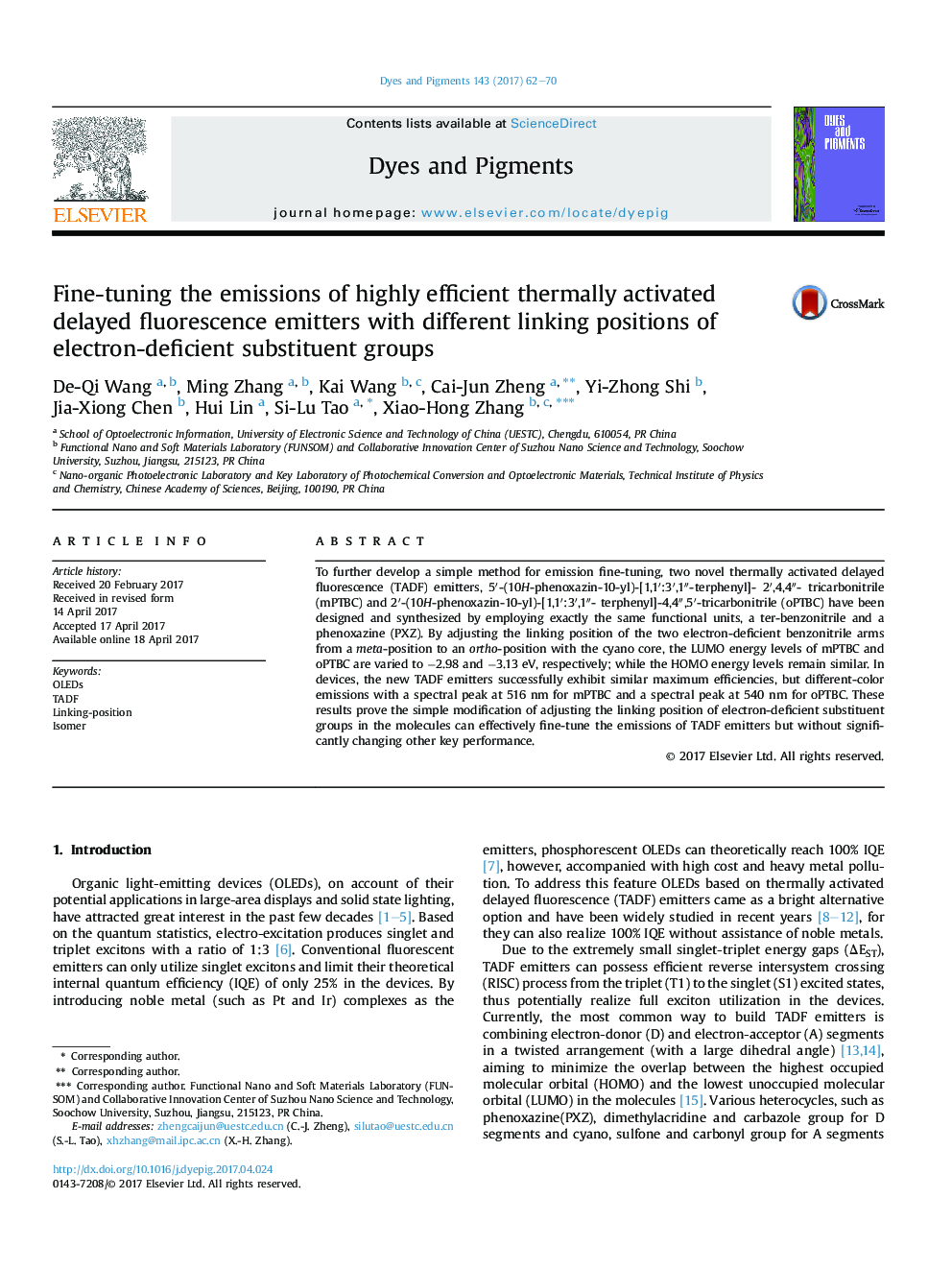| Article ID | Journal | Published Year | Pages | File Type |
|---|---|---|---|---|
| 4765866 | Dyes and Pigments | 2017 | 9 Pages |
Abstract
To further develop a simple method for emission fine-tuning, two novel thermally activated delayed fluorescence (TADF) emitters, 5â²-(10H-phenoxazin-10-yl)-[1,1â²:3â²,1â³-terphenyl]- 2â²,4,4â³- tricarbonitrile (mPTBC) and 2â²-(10H-phenoxazin-10-yl)-[1,1â²:3â²,1â³- terphenyl]-4,4â³,5â²-tricarbonitrile (oPTBC) have been designed and synthesized by employing exactly the same functional units, a ter-benzonitrile and a phenoxazine (PXZ). By adjusting the linking position of the two electron-deficient benzonitrile arms from a meta-position to an ortho-position with the cyano core, the LUMO energy levels of mPTBC and oPTBC are varied to â2.98 and â3.13 eV, respectively; while the HOMO energy levels remain similar. In devices, the new TADF emitters successfully exhibit similar maximum efficiencies, but different-color emissions with a spectral peak at 516 nm for mPTBC and a spectral peak at 540 nm for oPTBC. These results prove the simple modification of adjusting the linking position of electron-deficient substituent groups in the molecules can effectively fine-tune the emissions of TADF emitters but without significantly changing other key performance.
Related Topics
Physical Sciences and Engineering
Chemical Engineering
Chemical Engineering (General)
Authors
De-Qi Wang, Ming Zhang, Kai Wang, Cai-Jun Zheng, Yi-Zhong Shi, Jia-Xiong Chen, Hui Lin, Si-Lu Tao, Xiao-Hong Zhang,
